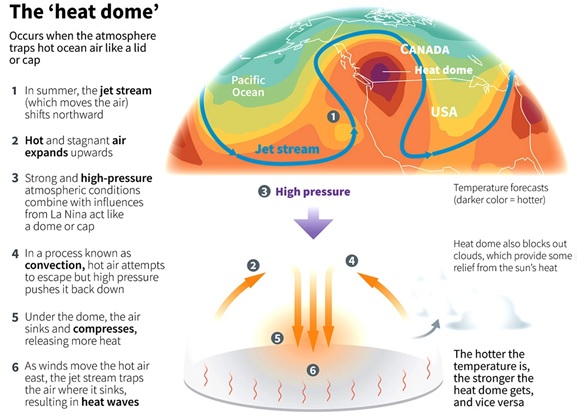- Home
- Prelims
- Mains
- Current Affairs
- Study Materials
- Test Series
Why Is Europe Experiencing A Record-Breaking January Heat Wave?
Heat Dome
- A heat dome is an area of high-pressure that traps warm air over a region for an extended period of time, similar to a lid on a pot. The longer the air remains trapped, the more the sun works to heat it, resulting in warmer conditions. Heat domes can last for a few days or even weeks, potentially leading to deadly heat waves.
- When high pressure forces air to sink, it gets compressed and becomes even warmer. Additionally, as the air sinks, it becomes drier, further raising the temperature of the area.
Heat Domes and the Jet Stream
- The formation of heat domes is related to the behaviour of the jet stream, a fast-moving area of air in the atmosphere with a wave-like pattern that moves from north to south and back again. When these waves become bigger and elongated, they can slow down or become stationary, leading to the formation of a high-pressure system and a heat dome.
Climate Change and Heat Domes
- While heat domes are likely to have always existed, researchers suggest that climate change may be making them more intense and longer-lasting. As temperatures rise, it is expected that the jet stream will become more wavy and have larger deviations, leading to more frequent extreme heat events.
Previous Instances of Heat Domes
- In 2021, a heat dome formed over western Canada and the US, causing deadly heat waves. Portland saw temperatures reach 46°C, Washington hit 49°C, and Lytton in British Columbia saw temperatures soar to over 46°C. It is believed that hundreds of people died as a result of this extreme weather event.









 Latest News
Latest News

 General Studies
General Studies